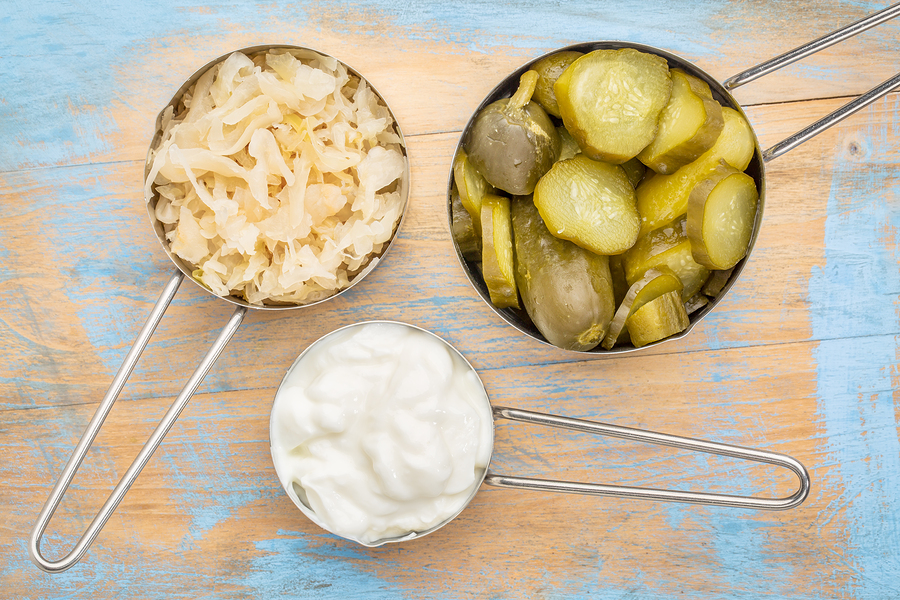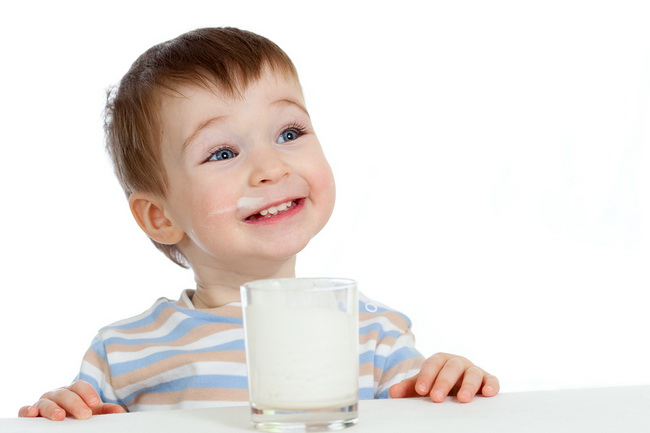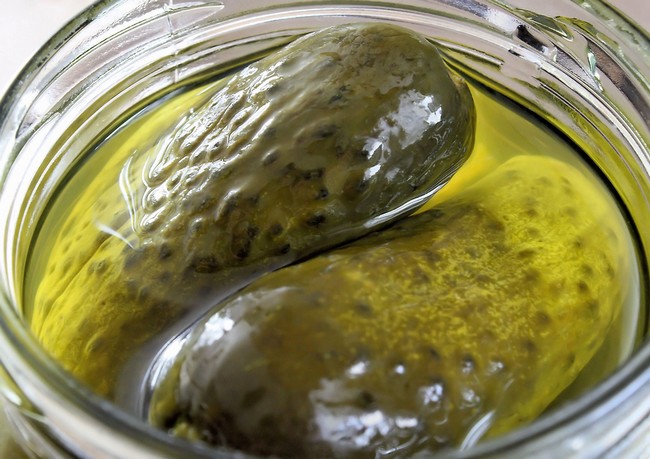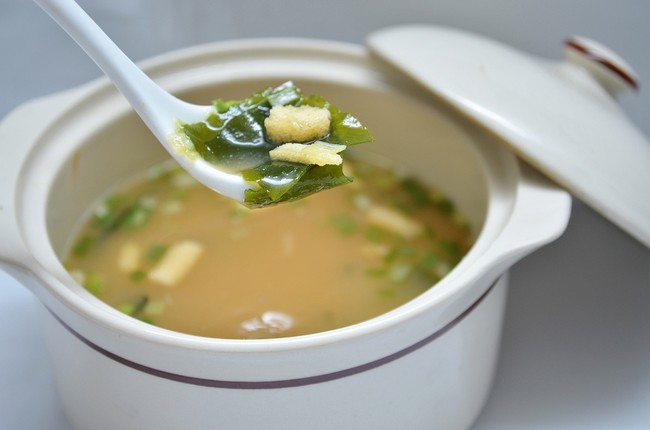- Make It Yourself Lavender Heart-Shaped Bath Bombs!
- 20 Things You Never Knew About “Down There”
- 12 Best Foods For Those Suffering From Arthritis Pain
- 12 Personal Hygiene Mistakes Almost Everyone Makes (Mom Never Told You About #4!)
- 15 Medicinal Plants And Herbs From The Cherokee People
- 12 Mind-Blowing Benefits Of Drinking Coconut Water During Pregnancy
- 12 Outstanding Winter Foods That Won’t Fatten You Up Like A Christmas Turkey
Pump Up Your Immune System With These Probiotic Foods!

Photo credit: bigstock.com
Cold and flu season is here. Are you ready for it? You don’t want to get that ineffective flu shot but other than washing your hands and living like a hermit, what else can you do?
You can improve your immune system so that you naturally fight off viruses!
Did you know that about 80 percent of your immune system lies in your digestive tract? It’s true! The good bacteria in your gut are responsible for killing off a great many bad guys before they ever get a chance to multiply.
Unfortunately, most Americans do not eat enough of the healthy foods that feed those “good guys.” Also, every time you consume antibiotics, you are killing off the good bacteria as well as the bad.
Pump up your immune system by feeding it probiotics. These are live microorganisms that have powerful benefits for the body, the immune system, your digestive system, and your brain. Studies have shown that people who consume lots of probiotics have better digestion, improved heart function, and lower rates of depression.
Want to know more? Keep reading! We made a list of 12 of the best probiotic foods in the world! Add these to your diet to beat the flu without no stinkin’ shot!
1. Sourdough Bread
You probably did not realize that bread could contain probiotics, but it’s a fact. Sourdough bread is made from a sourdough starter, which works much the same way yeast does. This starter contains lactobacillus, which is a terrific probiotic. Also, sourdough bread is low on the glycemic index, which means it won’t spike your blood sugar the way other types of white bread do.
Continue to Page 2

Photo credit: bigstock.com
2. Yogurt
The gold standard for probiotics! Yogurt is milk that has been fermented with all those good bacteria we have been telling you about. The two main types are lactic acid bacteria and bifidobacterium. Sometimes you find yogurt that even contains lactobacillus. A diet high in yogurt has been associated with numerous health benefits, including improved bone density. It also has been shown to naturally lower blood pressure. Even young children can benefit from yogurt as it can reduce episodes of diarrhea which is caused by antibiotics. It’s important to note that not all types of yogurt contain live cultures. Some types of yogurt are highly processed, which kills the beneficial bacteria. Look for yogurt that states that is full of live and active cultures.
3. Most Cheese
We say most because although many people believe that all cheese is fermented, there are a few types of cheese, although they are fermented, do not contain probiotics. You should check the labels of the cheese you buy just to be sure. Most good bacteria will survive the aging process in lots of cheese including mozzarella, cheddar, Gouda, and cottage cheese. Cheese is a very nutritious food, full of protein, calcium, and other important vitamins and minerals. Add about 1 ounce of cheese to your daily salad or sandwich and get a dose of healthy probiotics at the same time.
Continue to Page 3

Photo credit: bigstock.com
4. Kefir
No, kefir is not a type of Christmas tree, it’s a fermented milk drink. Something like a liquid yogurt. This product is made by adding kefir grains to cow’s milk (sometimes goat milk) and allowing it to ferment. Kefir grains aren’t a true grain, but are actually lactic acid bacteria cultures that look something like small pieces of cauliflower. Although most Americans are familiar with yogurt, kefir is a much better source of probiotics.
5. Natto
This is a fermented soy bean food which contains probiotic bacteria called bacillus subtilis. Natto is a very common food in Japan, where it is often mixed with rice and served as a breakfast food. Natto has a very strong flavor and smell, which is why it is often mixed with rice. This soy food is rich in vitamin K2 and protein. One study involving elderly Japanese males found that those who consumed natto on a regular basis had higher bone mineral density.
Continue to Page 4

Photo credit: bigstock.com
6. Sauerkraut
This dish of fermented cabbage comes to us from Germany. This is one of the oldest traditional foods of Europe. Sometimes served as a side dish, it is often mixed with sausage or cooked pork meat. It can be a bit on the salty side but has a sour taste most people love. Sauerkraut is loaded with fiber, vitamin K, C, B, iron, manganese, and, of course, probiotic bacteria. This fermented cabbage also has two important antioxidants for healthy eyesight, zeaxanthin and lutein. Always choose unpasteurized sauerkraut as the pasteurization process kills the probiotic bacteria.
7. Traditional Buttermilk
There are two types of buttermilk, cultured and traditional. Traditional butter milk is nothing more than the leftover milk that comes when butter is made. This type of buttermilk is the only kind that has probiotics. Some people call this Grandma’s buttermilk or Grandma’s probiotic buttermilk. This kind of buttermilk is very difficult to find in America. You might want to try making your own butter (it is wicked easy to make!). This way, you will have your own source of buttermilk.
The other type, cultured buttermilk, is what is traditionally sold in America today. It has no probiotics as it has been pasteurized.
8. Tempeh
This is another soy bean product that is from Indonesia. Tempeh makes a type of patty that tastes similar to mushrooms. This is often what vegans consume as “hamburger” patties and has become quite popular throughout the world. Soy beans are high in a compound called phytic acid, a substance that inhibits the body from absorbing minerals such as zinc and iron. However, once soy beans are fermented, it greatly reduces the amount of phytic acid in the plant, which means the body can absorb more of its minerals. Tempeh is also one of the few sources of vitamin B12, something most vegans do not get enough of.
Continue to Page 5

Photo credit: bigstock.com
9. Pickles
Pickles are cucumbers that have been “pickled” in a mixture of water and salt. They are left for a long period of time to ferment naturally, using the cucumbers own natural lactic acid bacteria. This is what makes pickles “sour”. These are sometimes called dill pickles. Pickled cucumbers are a terrific source of probiotics! Unfortunately, most of the pickles sold in America are made from vinegar. These pickles have no probiotics. Look for pickles that do not contain vinegar for some super probiotics and vitamin K.
10. Kimchi
Although this sounds like a new yoga pose, it’s actually a spicy Korean dish made from cabbage, although occasionally it is made from other vegetables. There are a mixture of spices used in this dish including scallions, garlic, red chili pepper flakes, and ginger. Kimchi contain a type of lactic acid bacteria called lactobacillus. Kimchi that is made from cabbage also has superior cancer fighting power, vitamin B2, and iron, along with a healthy dose of vitamin K, which is vital for proper blood clotting.
11. Kombucha
You have probably seen this one around lately as it has become very popular in the last few years. Kombucha is a fermented tea drink made from either black or green tea. This tea is made by fermenting it with a mixture of friendly bacteria and yeast. Kombucha is a great source of probiotics although, it is an acquired taste for many as it can be quite sour.
Continue to Page 6

Photo credit: bigstock.com
12. Miso
Miso is a seasoning that comes to us from Japan. This is made by fermenting soy beans with a mixture of salt and a type of fungus called koji. Sometimes miso is made by mixing soy beans with other foods such as rye, rice, or barley then turning this mixture into a paste. This is a popular breakfast food in Japan where it is often used in a dish called miso soup. Miso is a bit salty and comes in a variety of colors depending on what it is mixed with including yellow miso, white, red, and yellow. Miso is an excellent source of vitamins, minerals, vitamin K, copper, manganese, and, of course, probiotics.
READ ALSO: 15 Ways to Eat Your Way to a Stronger Immune System
Of course, there are also probiotic supplements but you should speak with your doctor about the proper dosage and which brand would be best for your particular situation. Most people can get all the natural probiotics they need simply by eating more of the fermented foods mentioned above.
References:
































